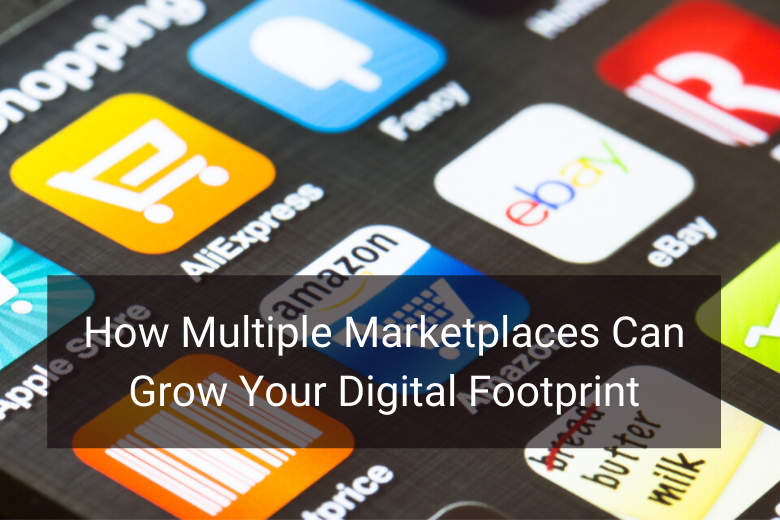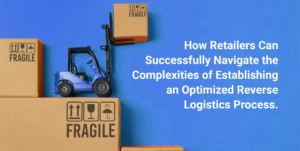As an e-commerce seller, chances are that you started selling on the most visible marketplace sites such as Amazon, Newegg, or eBay, but may have stopped there. That’s a good start, but you are missing out on sales, exposure, and growth by not diversifying and listing on multiple marketplaces.
The last few years have seen a surge in marketplace sales around the world (52% of global retail sales in 2018), making it clear that this model of e-commerce is taking off with sellers and shoppers alike. Recognizing this opportunity, a renaissance of unique marketplaces have emerged, each with their own particular business models, service offerings, and audiences that warrant the attention of everyone in retail.
Do you shop on marketplaces?

Over the next year, how would you describe your likely behavior regarding marketplace purchases?

Results of an Internet Retailer and Bizrate Insights Survey of 1,108 U.S. Shoppers in April, 2019.
Over the next year, how would you describe your likely behavior regarding marketplace purchases?
Merchants who diversify and sell on three or more channels sell on average 156% more than their single-marketplace counterparts. This just goes to prove that if you aren’t looking for every chance to expand your digital commerce footprint and explore what new customers and services are out there, your business is missing out on massive opportunities. In 2020, the question cannot be “should I sell on a marketplace?”, but rather, “how many marketplaces should I sell on?”.
Here are a few reasons why you should increase your presence and sell on more than one marketplace:
Business is Booming
E-commerce sales are posting their most pronounced growth in over seven years, and the top 100 marketplaces accounted for 58% of those sales, amounting to marketplaces’ largest contribution to date.

It isn’t just Amazon who is taking the lead. Established marketplaces such as Newegg, Houzz, and Etsy are pulling in stronger than industry average GMV for their sellers.
Maximize Your Product Visibility
The modern e-commerce customer’s purchase journey is more complex than ever. 87% of retail searches still start out on major search engines and 86% of shoppers prefer to research using a combination of retailers, brands, and marketplaces before making a purchase. Given this e-commerce landscape where shoppers are doing their due diligence before finally pulling the trigger, the responsibility rests with online sellers to adapt and to meet their customers wherever and however they are shopping.
So, your products are doing well on marketplace A, but what if customers are looking for your brand on marketplace B? Or even worse, what if your competitors are raking in the dough on a niche marketplaces you haven’t even heard of? Selling on multiple marketplaces is critical to maximizing your products and brand visibility while converting more sales. There is no excuse for making your brand and products harder for customers to find, especially when you consider the next point.
“Online sellers have been known to increase retail sales as much as 1,250%— simply by listing on new channels like Sear and Best Buy.”
– BigCommerce
It’s So Easy to List on Multiple Marketplaces!
Most marketplaces are eager to have quality sellers and products listed on their platform. Due to the majority of their business models centered on a commission structure, it’s the role of the marketplace to increase your visibility and sales and thereby do better for their business. With this in mind, the application, approval, and onboarding process for getting your products listed on a marketplaces is often free, painless, and done quickly. If you are listing on multiple marketplaces, it is a massive benefit to be partnered up with an integration service provider to cohesively manage all your items, inventory, order processing, and returns. Another perk is that if your marketplaces and integrator service are synced up, then you can list easily on new sites with the push of a button.
Multiple Marketplaces Can Provide Unique Customer Insights
Selling on e-commerce marketplaces can provide the expanded data you need to solve the puzzle of consumer behavior and market trends. Although available data varies by marketplace, you can usually access reports on average order value (AOV), revenue by product or product category, preferred shipping methods, promotion performance, customer reviews, customer location, and returns. This type of information can be particularly useful for new products. Analyzing sales data from multiple marketplaces, you can more accurately estimate market prices and develop production forecasts before launching full-scale marketing efforts. In addition, marketplace data can reveal general sentiment and feedback on products in the form of reviews and product questions. Keeping each marketplace’s core customer base in mind, these reviews can also give you clues into how your products are perceived by different customer demographics.
Gain Access to New Customers and Sales around the Globe
Cross-border e-commerce sales are estimated to reach 20% of all e-commerce sales by 2022 and the growth potential of selling abroad simply cannot be ignored. Many e-commerce marketplaces now prioritize offering their sellers the ability to quickly and cost-effectively scale globally. They do this by providing localized services like payment processing, customer support, marketing, and fulfillment through partners. By leveraging marketplaces’ drive for international expansion, sellers are able to easily access new customers and develop their global brand.
A great example of a recent marketplace development is the 95%+ Chinese-seller marketplace, Alibaba, recently opening up its platform for US-based merchants. This can be a great tool for sellers looking to specifically penetrate the Chinese market through a marketplace. Expanding seller reach internationally is a massive goal for Newegg, with a presence in 80+ countries and significant growth in established markets like the UK, as well as emerging markets such as the UAE and Saudi Arabia.
For sellers looking for new opportunities to grow their business, expansion beyond borders is the obvious choice. To be successful, it’s important that your marketplaces have the cross-border infrastructure in place to successfully promote and market your products to the regions and customer segments that make sense for your business.
Go Niche!
Some 35% of consumers today are shopping on niche marketplaces, with top destinations including Newegg (electronics), Houzz (home furnishings), and Poshmark (apparel). Niche marketplaces can be particularly beneficial for small-to-medium sellers that could otherwise be drowned out on larger generic marketplaces who have millions of merchants selling anything and everything.
According to the 2019 Internet Retailer Marketplace Report, the top niche marketplaces collectively grew total GMV 22%, slightly ahead of the 20.1% increase that all top 100 marketplaces saw. This makes sense when considering the multi-touchpoint journey customers embark on, with a greater emphasis on research and comparison shopping. Additionally, niche marketplaces that cater to specific customer interests cultivate a greater sense of brand loyalty, and return customers. These marketplaces offer a greater product catalog for the related categories and subcategories, and often have greater visibility from feature articles and reviews from trusted sources or influencers.

Source: WebRetailer
Marketing Strategies Unique to Marketplaces
If you are a developing brand or are just looking to expand into new segments, marketplaces may provide you tools to aid in your content marketing, branding, SEM, and/or SEO strategies. For example, Newegg specializes in developing editorial content such as blogs, reviews, videos, and imagery that are all focused on SEO performance and engaging with customers at every stage of their purchase journey.
Always be open to the marketing channels that a marketplace offers – they know the best ways to speak to their audience. An example of which is the promotion of products through a marketplace’s social channels. When factoring in your desired customers, promoting on certain marketplaces’ established Instagram, Facebook, or email channels can be a powerful way to introduce your brand or products to an engaged audience.
Listing on Multiple Marketplaces? You’re in Good Company
Other sellers and brands have adopted the strategy to sell on multiple marketplaces and here is a chart of the platforms other sellers are choosing to sell on. Even 80% of sellers on Amazon, the top marketplace in the US, are electing to sell on multiple marketplaces.
These sellers know that even the largest marketplace cannot reach every customer, offer access to every valuable third-party partner, or offer the perfect-for-your-business mix of marketing & fulfillment services that can be had through listing on multiple marketplaces.

Results of an Internet Retailer survey of 68 retailers and brands, May 2019.
Powerful Friends
Sellers benefit greatly with the partnerships their marketplaces make with 3rd party business, crucial to e-commerce in 2020.
- Fulfillment: By partnering with Floship, Newegg is able to provide cost effective shipping solutions for our sellers that are exporting from China – and therefore protect them from some of the hardships caused by the US-China trade war. If your business has aspirations to ship internationally, or just want the cheapest shipping rate possible to send something across town, having a marketplace synced up with leading fulfillment service providers can be a significant advantage for many sellers.
- Integration: Top marketplaces will partner with a variety of qualified integration service providers to help “fill the gaps” for multi-channel integration process such as item creation, inventory management, order processing, as well as returns & refunds and more. Marketplaces that have reliable A-list of integration partners allows their sellers to easily integrate and manage their products across numerous marketplaces. However, if a marketplace isn’t partnered with leading integrators, then sellers on the platform could be left out of these great benefits and manually have to process everything. Just imagine the hassle of having to make routine pricing updates across dozens of different marketplaces – that’s why these multi-channel integration partners are so important.
- Payment: Selling internationally on marketplaces is the future, however, it does come with its own set of challenges. For sellers participating in cross-border trade, there can be significant hurdles managing foreign proceeds, exchange rates and transfer speeds. Marketplaces who partner with quality payment service can ease these burdens.
As a Marketplace
We are always eager to help grow the business of each and every seller on our Newegg.com,Newegg Global, Newegg Business, and Newegg Canada platforms. If you are interested in expanding your digital footprint on Newegg, then we would love the opportunity to talk.
Need a shipping solution to the US?
Floship is an e-commerce order fulfillment provider based in Hong Kong. We hel
p emerging e-com
merce brands store, pick, pack and deliver their orders worldwide from our warehouses in either Hong Kong, Shenzhen or Europe. Reach out by filling out our Get Global Solutions form and one of our solution experts will get back to you with a solid shipping solution.

Ready To Upgrade Your Logistic Solution?
Speak to Floship ecommerce logistic consultant about improving your global support chain today





